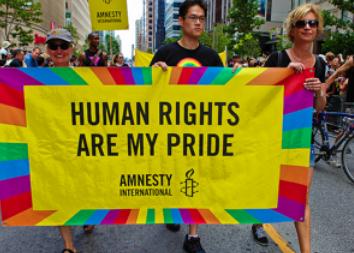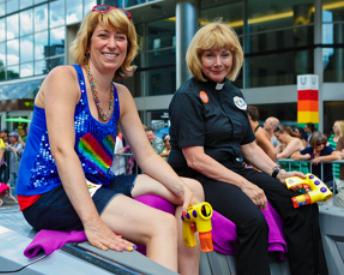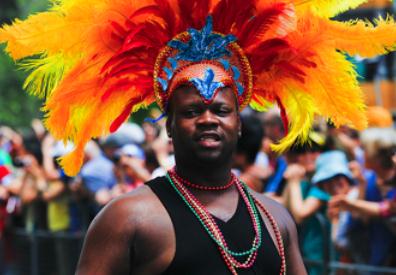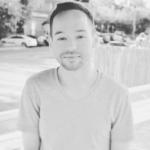
Amnesty International marches in the parade. Credit: Adam Coish

Co-grand marshals Laurel Broten and Cheri DiNovo. Credit: Adam Coish
Toronto was lit up in a kaleidoscopic blaze on July 1 for the 32nd annual Pride parade. An estimated 1.2 million participants descended on the downtown core to watch the colourful caravan of close to 30,000 marchers.
It was hard to miss Dave and Sonja Yuzwa, who staked out a spot early at the corner of Yonge and Carlton streets. The straight couple say they make the journey from Oshawa, along with their friends Dave Warner and Sonja Fontaine, each year because they are drawn to the accepting atmosphere of Pride Toronto.
“It’s an awesome blast,” Warner says. “Everyone is happy and having fun; nobody fights or argues. You can be yourself. You can be straight or as queer as you want.”
The group says they occasionally catch grief from their Oshawa friends for attending a queer festival but wouldn’t miss it for all the rainbow glitter in the world.
“Don’t knock it if you haven’t tried it,” Janet Yuzwa says with a laugh. “Attending Pride is probably one of the best experiences of my life.”
The experience of Pride is electric for most, with its diverse mix of marchers representing everything from political parties to sexual identities to the struggle for ameliorated human rights.
The Iranian Railroad for Queer Refugees advocacy group marched for the second consecutive year, after receiving an award from the Pride Toronto committee last year for best entry under the “Dream Big” theme.
Executive director Arsham Parsi says the fight for queer rights in his home country is far from over and his group will continue to raise awareness until the battle is won.
“We want to march on behalf of those people who are still in Iran and cannot speak. We want to say Iranian queers do exist and we need rights.”
Numerous participants in this year’s celebrations are frustrated by the commercialization of Pride. Many pointed to the fact that it was hard to walk down Church St without stepping on advertisements for Viagra.
Parsi agrees with the anti-consumerist opinion, saying Pride is increasingly becoming a corporate carnival.
“Pride used to be a social practice. We have to get Pride back on track. It’s very important because lots of people died. What we have today is the result of lost lives,” Parsi says.
As in other years, the parade included several organizations dedicated to improving queer lives.
PFLAG, Parents, Families and Friends of Lesbians and Gays, had a strong contingent of queer kids and parents – including Toronto Maple Leafs general manager Brian Burke and his son Patrick – many brandishing signs reading “hug a gay child.”
PGLAG member Michael Ain says that he relishes the opportunity to spread his group’s message and that marching in the Pride parade is an opportunity for many queer kids to connect with their parents.
“When I came out, my parents marched with PFLAG as a way to access my experience,” Ain explains. “Without that I think I would have been stuck. It was a turning point for me.”
As the parade turned the final corner, Xtra caught up with Councillor Pam McConnell, Toronto Centre-Rosedale, who has never missed a chance to walk in solidarity with her queer constituents.
McConnell says that it’s important for councillors to accurately represent the citizens they serve and that there is still a lot more to fight for.
“There is still a lot of homophobia, and the transgendered community still has a long way to go,” McConnell says.
“We have places all over the world where they still have laws against homosexuality, and we have people from those countries living in our community. We need to work so that they bring this message back to their countries. That’s the Toronto way and that’s what we do.”
For co-grand marshal Cheri DiNovo, the highlight of her duties was being able to celebrate the recently passed Toby’s Act and to help promote human rights for everyone.
“This year is a celebration of equal rights for everyone,” DiNovo says. “Not just in Ontario.”


 Why you can trust Xtra
Why you can trust Xtra


